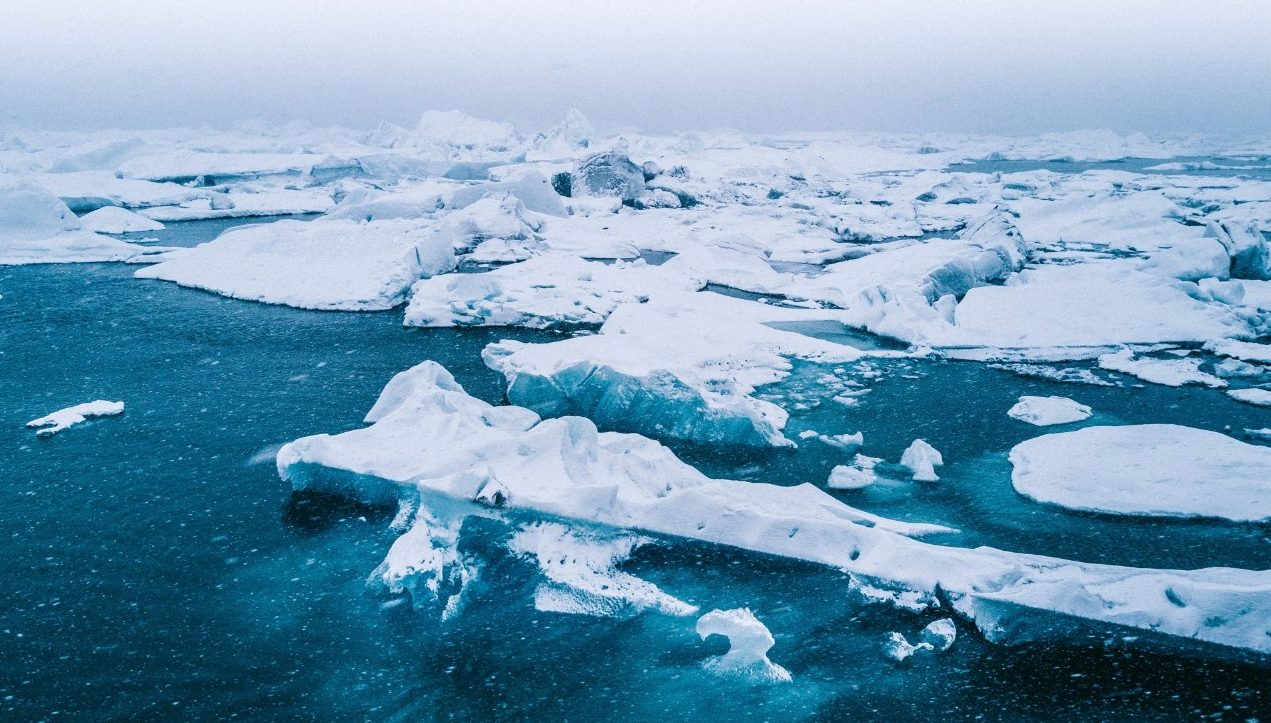The Arctic region is experiencing climate change at a much faster rate than the rest of the world. Melting ice sheets, runoff from thawing permafrost and other factors are rapidly changing the composition of the Arctic Ocean’s water. And that change is being experienced all the way down to the microbial level.
In a Concordia-led study published in the journal ISME Communications, researchers analyzed archival samples of bacteria and archaea populations taken from the Beaufort Sea, bordering northwest Canada and Alaska. The samples were collected between 2004 and 2012, a period that included two years—2007 and 2012—in which the sea ice coverage was historically low. The researchers looked at samples taken from three levels of water: the summer mixed layer, the upper Arctic water below it and the Pacific-origin water at the deepest level.
The study examined the microbes’ genetic composition using bioinformatics and statistical analysis across the nine-year time span. Using this data, the researchers were able to see how changing environmental conditions were influencing the organisms’ structure and function. The researchers found subtle but statistically significant changes in the communities they studied.
“We observed a general overall loss in diversity of species across all the different water masses,” says David Walsh, a professor in the Department of Biology and the paper’s corresponding author.
“We also saw changes in the composition of the microbial community, meaning there were different species after the 2007 sea ice minimum than before.”
However, the periods of population richness decline changed between the ocean’s layers of water. Sudden decline in the fresher summer mixed water level, between 3–9 meters deep, was observed in 2005–2007. The upper Arctic water, between 16–78 meters, saw declines in 2010–2012, while the deeper Pacific water layer, between 49–154 meters, experienced a two-step decline—once between 2005–2007 and again between 2010–2012.
Small Beginnings
The researchers are taking care not to overemphasize the results of their findings, saying the changes, while significant, remain slight. But with the summer Arctic ice cover shrinking steadily year over year, the data does hint at possible trends that may be visible in upcoming population studies in more recent years.
“With the warming and freshening of the Arctic Ocean comes a decrease of nutrients that are important for photosynthesis, which produces the organic matter that serves as energy and carbon sources for the marine food web,” Walsh explains.

(Image credit: Willian Justen de Vasconcellos)
“This shift risks strengthening what is known as the microbial loop, in which the energy and carbon that would normally go into higher trophic levels—meaning zooplankton and then fish—is rapidly recycled by microorganisms. This ecosystem is already dominated by microbial processes, which will only get stronger as this system continues.”
“This study provides us with a baseline idea of what is happening in the Arctic,” says co-author Arthi Ramachandran, Ph.D. “The Arctic is warming four times faster than the rest of the world, which makes it a fascinating ecosystem to study. The oceans are all interconnected, and the physical barriers of these oceans are becoming much less defined.”
A Warmer, Fresher Future
The researchers are now planning a metagenomic study that extends the time series to cover periods of even more intense sea ice minima. They hope to fully sequence the organisms’ genomes to further understand the microbial communities’ diversity and function in the environment.
The paper’s other co-authors are Ph.D. candidate Vera Onana, Susanne Kraemer of Environment and Climate Change Canada and William Li of the Fisheries and Oceans Canada.
The Natural Sciences and Engineering Research Council of Canada Discovery program contributed funding to this study.



